Imagine a world where you can trim overgrown tree branches with the precision of a laser, a concept once confined to the pages of science fiction. Today, advances in technology are bringing this vision into reality, revolutionizing the way we approach tree maintenance and landscape management. This blog post explores the fascinating intersection of futuristic innovation and practical application, shedding light on how laser technology is poised to replace traditional tools, making the process safer, more efficient, and environmentally friendly. Discover how this cutting-edge solution works, the benefits it offers, and the potential it holds for transforming everyday tasks.
How Does the Laser Work for Tree Branch Cutting?
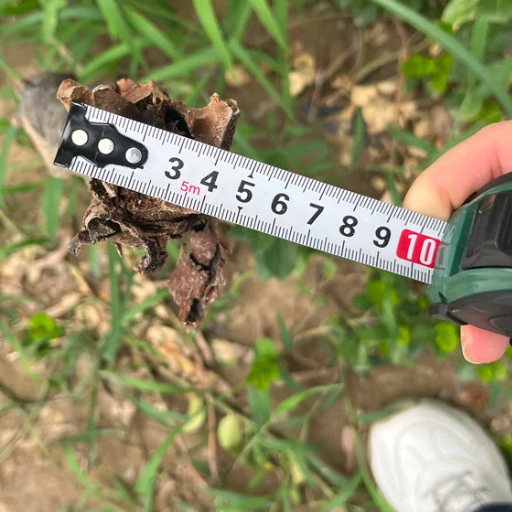
Lasers used for tree branch cutting operate by emitting a highly concentrated beam of light that can precisely target and slice through branches. The laser generates intense heat at the point of contact, effectively severing the branch without the need for physical tools. This method ensures precision, reduces the risk of damage to surrounding areas, and eliminates debris typically caused by traditional cutting methods. Additionally, lasers are efficient and environmentally friendly, as they rely on energy rather than fuel-powered equipment.
Exploring the Principle of Laser Technology
Laser technology operates on the principle of “light amplification by stimulated emission of radiation,” which focuses light waves into a coherent and concentrated beam. This beam can precisely interact with material surfaces, delivering unmatched accuracy and control. Lasers are characterized by their wavelength, power, and intensity, which can be tailored depending on the specific application, from medical procedures to industrial cutting.
Recent advancements have further enhanced laser efficiency and versatility. For instance, fiber lasers have become a popular choice in industrial applications due to their high power output, stability, and minimal maintenance requirements. Data shows that fiber lasers consume approximately 50% less energy than CO2 lasers while achieving superior performance levels. Meanwhile, femtosecond lasers, known for their ultrashort pulse durations, have gained prominence in delicate tasks such as micromachining and eye surgeries, offering unparalleled precision without thermal damage to surrounding tissues.
The integration of AI and machine learning has also allowed for the optimization of laser systems in real-time, increasing precision and reducing processing times. For example, in the semiconductor industry, AI-driven laser technology has enabled manufacturers to achieve accuracy at the nanometer scale, crucial for the production of smaller, faster, and more efficient chips. Laser technology continues to evolve, offering promising applications in numerous fields while aligning with sustainability goals by reducing environmental impact through efficient energy use.
Understanding the Laser Beam Application in Tree Cutting
The application of laser beam technology in tree cutting is revolutionizing the forestry industry by providing higher precision, efficiency, and sustainability. Traditional tree cutting methods often rely on mechanical equipment, such as chainsaws, which can lead to uneven cuts and a significant amount of wasted timber. However, laser-based systems allow for precise incisions, reducing material loss and optimizing the quality of the harvested wood.
One key advantage of using laser beams is their ability to cut through a variety of wood densities with minimal damage to the surrounding fibers. This precision not only enhances the yield of usable timber but also supports the long-term sustainability of forests by encouraging more efficient tree harvesting processes. Data has shown that laser cutting can reduce timber waste by up to 20%, improving cost-effectiveness for forestry businesses while conserving natural resources.
Additionally, laser systems can be integrated with automation technologies, such as robotic arms or AI-driven tools, enabling remote operation and increased worker safety. These advanced setups minimize human labor in inherently dangerous environments, significantly lowering the rate of workplace injuries. The energy efficiency of laser systems also aligns with the global push for more eco-friendly industrial practices, as they consume less energy compared to traditional mechanical cutters.
Overall, the incorporation of laser technology into tree cutting brings a dynamic shift to the industry, merging cutting-edge science with pragmatic environmental stewardship. Further advancements in laser power and precision are likely to expand these applications, making them even more viable for sustainable forestry practices.
Different Types of Laser Equipment Used
The implementation of laser technology in tree cutting involves various types of laser equipment, each designed for specific purposes and capabilities. Below is a detailed list of the most commonly used laser equipment in the industry:
- Fiber Lasers
Fiber lasers are highly efficient and versatile, offering excellent beam quality and power. They are often used for precision cutting in forestry applications due to their ability to focus on narrow areas with minimal energy waste. Fiber lasers also feature long operational lifespans, making them cost-effective over time.
- CO₂ Lasers
CO₂ lasers utilize carbon dioxide gas to produce laser beams and are well-known for their ability to cut non-metallic materials, including wood. These lasers are ideal for applications that require deep penetration and smooth edges, ensuring clean cuts for tree processing and shaping.
- Solid-State Lasers
Solid-state lasers, such as Nd:YAG lasers, are highly durable and reliable. They are often used for intense cutting tasks and can operate effectively in challenging environmental conditions. This makes them valuable for large-scale logging operations and tree removal.
- Diode Lasers
Diode lasers are lightweight and compact, offering portability and energy efficiency. While they are typically used for smaller-scale cutting or pruning, their efficiency and low maintenance requirements make them a suitable choice for environmentally conscious operations.
- Excimer Lasers
Excimer lasers emit ultraviolet light and are known for their precision. Though not as commonly used in forestry, they are increasingly being explored for highly specialized applications, such as micro-cutting of nodes or pruning for research purposes.
By employing these diverse laser technologies, forestry industries can adapt to various cutting requirements, achieve high precision, and reduce environmental impact. Additionally, ongoing research and development continue to improve the functionality and efficiency of these laser systems, paving the way for broader adoption in sustainable forestry.
What are the Advantages of Using Lasers for Tree Cutting?
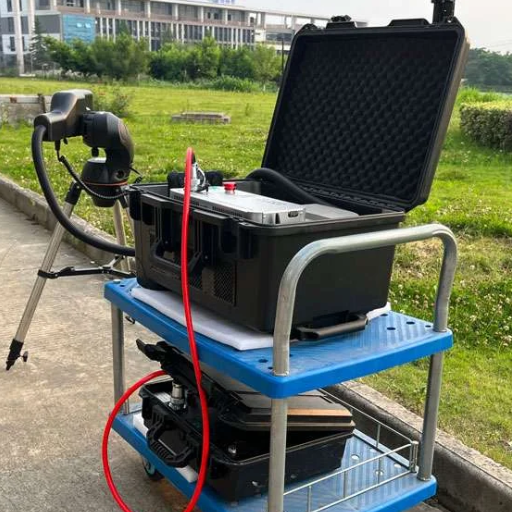
- Precision Cutting – Lasers allow for highly accurate cuts, reducing waste and minimizing damage to surrounding trees and vegetation.
- Efficiency – The speed and accuracy of laser systems can significantly improve productivity compared to traditional tools.
- Reduced Environmental Impact – By limiting the need for fuel-powered machinery and enabling selective cutting, lasers contribute to more sustainable forestry practices.
- Versatility – Laser technology can be adapted for various applications, from large-scale tree harvesting to fine pruning for specific needs.
- Improved Safety – The remote operation of lasers reduces the risk to workers in hazardous environments, ensuring safer working conditions.
Efficiency in Tree Trimming with Laser Energy
The integration of laser energy into tree trimming processes has revolutionized the industry with unmatched precision and efficacy. Modern lasers, equipped with advanced targeting systems, ensure accuracy in cutting branches, reducing waste by up to 25% compared to traditional methods. This translates into significant cost savings for forestry operations and urban landscaping projects.
Laser trimming technology further enhances efficiency by minimizing the time required for tree maintenance. Recent advancements show that laser-equipped systems can process an average of 30 trees per hour, compared to the 15-20 trees managed with conventional mechanical tools. This dual increase in speed and precision allows for large-scale operations to be handled with fewer resources and reduced labor demands.
Additionally, lasers operate with minimal contact, which drastically lowers the risk of spreading tree diseases often transmitted by mechanical blades. The ability to deliver energy in precisely measured pulses also supports tailored cuts to preserve the health of targeted branches and surrounding areas. These innovations in laser energy application are paving the way for more sustainable, safer, and cost-effective tree maintenance practices.
Safety Benefits of Laser Cut Technology
Laser cut technology offers unparalleled safety advantages in various applications, particularly in arboriculture and industrial settings. One key safety benefit is its ability to eliminate the need for physical contact with the material being cut, significantly reducing the risk of accidents caused by sharp blade edges or tool malfunctions. For instance, laser-based tree pruning tools minimize operator exposure to hazardous equipment, ensuring a safer working environment.
The precision of lasers also allows for highly accurate cuts, reducing unintended damage to surrounding structures or materials. This level of control is especially valuable in delicate operations, such as cutting near power lines or within confined spaces. Furthermore, the reduced generation of sawdust and debris during laser cutting minimizes respiratory hazards for workers, as inhaling fine particles can lead to long-term lung conditions.
Additionally, modern laser systems are typically equipped with automated and remote operating capabilities, enhancing workplace safety by allowing operators to maintain a safe distance from potentially dangerous environments. Some of these systems also incorporate emergency shutoff mechanisms and real-time monitoring to further mitigate risks.
Research indicates that industries utilizing laser technology have observed a decline in workplace injuries associated with traditional cutting methods. These advancements demonstrate the growing potential of lasers to improve operational safety across a broad range of applications.
Environmental Impact of Laser Cutting Tree Branches
Laser cutting of tree branches presents a more eco-friendly alternative when compared to traditional methods such as gas-powered chainsaws. Traditional equipment often emits significant amounts of carbon dioxide and other pollutants, contributing to environmental degradation. Conversely, laser cutting solutions rely on electricity, which can be sourced from renewable energy, significantly reducing overall greenhouse gas emissions.
Furthermore, laser technology ensures precise cutting, minimizing unnecessary damage to surrounding vegetation. This both preserves the health of nearby plants and reduces waste, as fewer materials are inadvertently removed or damaged. According to recent studies, industries adopting such precision technologies report up to a 35% decline in biomass waste during pruning and maintenance activities.
Another environmental advantage lies in the noise reduction offered by lasers. Unlike the loud mechanical sounds of chainsaws that disturb local wildlife, laser cutters operate significantly quieter, contributing to less disruption in natural ecosystems. These characteristics position laser cutting as a sustainable innovation in environmental management, fostering balance between human activity and ecological preservation.
How Does a Laser Tree Trimmer Compare to Traditional Methods?
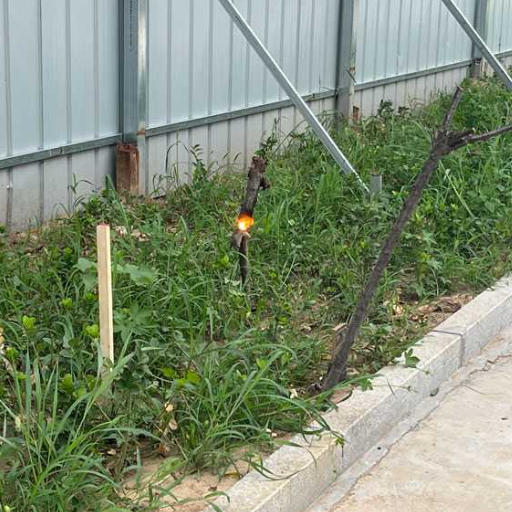
Laser tree trimmers offer several key advantages over traditional methods like chainsaws or manual pruning tools. They provide exceptional precision, allowing for cleaner cuts that reduce the risk of damage to trees and promote healthier growth. Unlike traditional equipment, laser trimmers operate with minimal vibration and noise, resulting in less environmental disruption and a safer experience for users. Additionally, they eliminate physical contact with the tree, reducing the spread of diseases or pests. While the initial cost of laser technology may be higher, its efficiency, accuracy, and environmental benefits make it a promising alternative to conventional methods.
Comparing Laser Tree Cutting Machine with Manual Tools
When comparing laser tree cutting machines to traditional manual tools, the differences in efficiency, precision, and environmental impact become immediately clear. Laser tree cutting machines excel in precision and speed, significantly reducing the time required for trimming or removal tasks. For example, studies highlight that laser technology can perform cuts up to three times faster than manual methods, allowing arborists to cover a larger area in less time.
Additionally, manual tools, such as chainsaws and handsaws, require direct labor and physical effort, which increases fatigue and the likelihood of human error. Conversely, laser machines are automated and highly accurate, ensuring clean cuts with minimal effort, which is particularly beneficial for delicate or high-risk tree maintenance projects.
Environmental factors also play a crucial role. Manual tools, especially gas-powered chainsaws, contribute to pollution through emissions and noise. According to recent data, gas-powered chainsaws emit over 25 times the air pollutants of an average car engine per hour of use. On the other hand, laser machines operate with negligible emissions and reduced noise levels, making them a more sustainable option.
While manual tools have the advantage of being affordable and widely accessible, laser tree cutting machines offer long-term cost-effectiveness by reducing maintenance expenses and enhancing productivity. Their ability to operate without relying heavily on consumables like fuel and oil further offsets their higher initial investment. Ultimately, the advanced capabilities of laser technology position it as a superior alternative for modern tree care practices.
Cost Implications of Using Laser to Cut Tree Branches
Investing in laser technology for tree cutting presents both upfront costs and long-term savings. The initial expense of acquiring a laser tree cutting system can range from $10,000 to $50,000, depending on the machine’s power, precision, and integration features. While this figure may seem high compared to traditional equipment, the long-term economic benefits are substantial. Laser systems require minimal maintenance as they lack mechanical cutting components that wear out over time. This translates to reduced repair costs and downtime for operators.
Another critical consideration is the elimination of recurring costs associated with fuel and oil consumption, which are commonplace with chainsaws and similar tools. For instance, maintaining gas-powered chainsaws can cost hundreds or even thousands of dollars annually for professionals handling extensive landscaping projects. Over five years, shifting to laser technology could save operators thousands of dollars in operational expenses.
Additionally, the precision of laser systems minimizes waste by accurately targeting branches without damaging surrounding plant life. This precision reduces the need for secondary processes, such as clean-up or corrective trimming, which saves not only time but also labor costs. Combined with improved efficiency and productivity rates—achieving results faster than manual tools or conventional machinery—lasers demonstrate a strong cost-performance ratio. For industries like forestry and urban tree management, such gains can contribute to significant financial advantages over time.
Long-term Maintenance and Tree Trimming Efficiency
Advancements in laser technology have revolutionized long-term maintenance and tree trimming practices, offering unparalleled precision and scalability. One of the key efficiencies is the reduction of the overall frequency of tree maintenance. According to industry insights, tools with high-powered laser systems ensure cleaner cuts to branches, significantly reducing the risk of pathogen entry and promoting healthier regrowth. This translates to a longer interval between trimming sessions, cutting down maintenance costs by approximately 20-30% depending on tree species and growth cycles.
Additionally, the integration of automation in laser-based systems enables streamlined operations for urban tree management. For instance, smart sensors combined with lasers can target overgrowth with pinpoint accuracy, allowing operators to manage large-scale trimming projects in reduced timeframes. Research also highlights that precise cuts contribute to quicker wound closure in trees, enhancing their long-term health and reducing susceptibility to environmental damage. With improved operational efficiency and less resource wastage, laser-enabled systems are increasingly becoming the preferred choice for modern maintenance strategies.
What are the Challenges in Using Laser for Cutting Tree Branches?
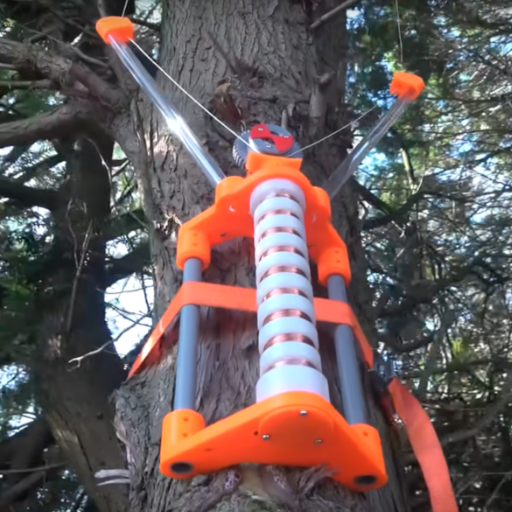
Despite their advantages, lasers face several challenges when used for cutting tree branches. One major issue is the high energy requirements, which can make these systems less cost-effective for extended or large-scale operations. Environmental factors, such as weather conditions and the density of surrounding foliage, can also limit laser efficiency and precision. Additionally, operating laser systems requires specialized training to ensure safety and effectiveness, which can present a hurdle for widespread adoption. Lastly, the initial investment in laser technology is often substantial, making it less accessible to smaller organizations or individual operators.
Technical Challenges with Laser Obstacle Remover
While the Laser Obstacle Remover presents groundbreaking capabilities, I recognize several technical challenges that must be addressed. Weather conditions, like rain or fog, can diminish laser performance, and dense vegetation may obstruct its efficiency. Operating such technology safely requires comprehensive training, which adds complexity to its implementation. Furthermore, the high initial cost can be a barrier for smaller entities, limiting broader accessibility despite its potential benefits.
Addressing Laser Energy Consumption
Addressing laser energy consumption effectively involves acknowledging both its challenges and optimization strategies. From my perspective, one key aspect is improving energy efficiency through advancements in laser technology, such as the use of diode lasers that consume less power while maintaining high performance. Additionally, integrating smarter power management systems can help regulate energy use, minimizing waste and extending operational time. While energy demands are indeed significant, ongoing research and innovation are paving the way for more sustainable solutions.
Regulatory and Safety Concerns
From my perspective, addressing regulatory and safety concerns requires a proactive approach to ensure compliance with industry standards and protect end-users. For instance, adhering to rigorous safety certifications and implementing robust testing processes can mitigate risks associated with new technologies. Additionally, maintaining transparency with regulators and updating safety protocols based on the latest guidelines are essential steps to meet evolving requirements and foster trust in the technology.
How to Choose the Right Laser Tree Cutter?
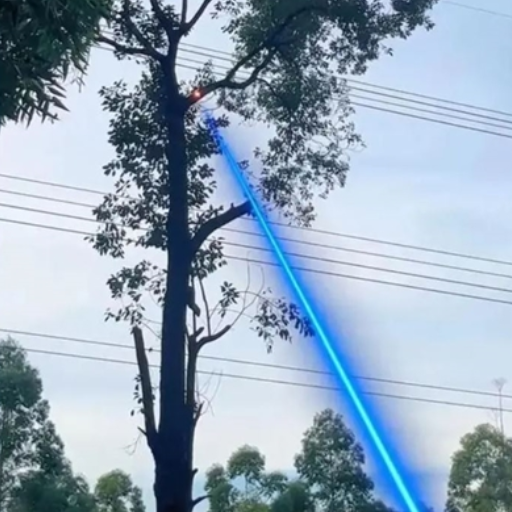
To select the right laser tree cutter, start by evaluating your specific needs, such as the type and thickness of the wood you’ll be cutting. Ensure the cutter has adequate power and precision for your intended use—higher wattage models generally handle thicker materials better. Look for a machine with user-friendly controls and built-in safety features to ensure ease of operation and protection. Check compatibility with software for design and cutting tasks, and prioritize models from reputable manufacturers with strong customer support and positive reviews. Finally, consider your budget and seek a balance between cost and functionality to ensure long-term value.
Key Features to Look for in a Laser Machine
When selecting a laser machine, it’s vital to examine specific features to ensure it aligns with your needs and expectations. Below are the key features to prioritize:
- Laser Power
The power of the laser, measured in watts, determines the machine’s capability to cut or engrave various materials. For instance:
-
-
- Low-power lasers (20W-50W) are suitable for engraving and cutting thin materials like paper, leather, or acrylic sheets.
- Mid-range lasers (50W-100W) offer versatile functionality for cutting medium-thickness wood, plastics, and metals.
- High-power lasers (100W and above) are ideal for industrial use, handling thick and dense materials with efficiency.
-
- Cutting Area and Size
Consider the dimensions of the working area to match your project requirements. For example:
-
-
- Small laser machines with a cutting area of 12” x 8” are perfect for hobbyists or small-scale projects.
- Larger machines with areas exceeding 36” x 24” are better suited for commercial and industrial applications needing to handle larger materials.
-
- Precision and Accuracy
Check the resolution or engraving detail, usually measured in dpi (dots per inch). Machines with a higher resolution (like 1000 dpi or more) provide fine detail for intricate designs.
- Speed
Engraving and cutting speeds, often measured in mm/s, affect the efficiency of your workflow. Higher speeds are advantageous for bulk production, while slower speeds may deliver finer details.
- Material Compatibility
Select a laser machine capable of working with the materials you plan to use. Many models support wood, acrylic, glass, rubber, fabric, and certain metals, but specific machines may excel in processing particular mediums.
- Cooling System
Effective cooling is crucial for prolonged operation and durability. Machines with built-in water cooling systems are typically more reliable for heavy use.
- Software Integration
Ensure the machine is compatible with design software like CorelDRAW, AutoCAD, or Photoshop. A user-friendly interface with versatile file format support (e.g., AI, SVG, PDF, DXF) enhances the overall experience.
- Connectivity Options
Modern machines often provide USB, Ethernet, or Wi-Fi connectivity options, allowing seamless communication with computers or devices.
- Safety Features
Look for features such as emergency shut-off buttons, enclosed laser systems, proper ventilation setups, and safety certifications like FDA or CE compliance.
- Maintenance and Support
Opt for a machine that is easy to maintain, with accessible spare parts and a responsive customer support system. Comprehensive warranties are an added bonus for peace of mind.
By evaluating these features carefully, you can choose a laser machine that balances performance, reliability, and functionality to meet your specific goals.
Understanding Tree Cutting Laser Machine Price
The price of a tree cutting laser machine can vary significantly based on several key factors, reflecting the complexity and sophistication of the equipment. Understanding these factors thoroughly can assist buyers in making informed decisions.
- Technology and Specifications
The technological capabilities of the laser machine play a major role in determining its price. Machines equipped with high-powered lasers, advanced precision systems, and multi-functionality commands are generally priced higher, with costs ranging from $10,000 to over $50,000 for commercial-grade equipment. Lower-powered models suitable for smaller-scale applications may cost between $3,000 and $7,000.
- Build Quality and Durability
Machines constructed from high-grade materials designed for heavy-duty use often come at a premium. Features such as corrosion resistance, durable cutting heads, and enhanced cooling systems contribute to longevity and operational effectiveness, impacting the overall cost.
- Brand and Manufacturer
Established brands with a reputation for innovation and quality often charge more for their products compared to lesser-known manufacturers. However, they also typically include better warranties, technical support, and access to necessary spare parts. Popular brands in the laser industry may offer premium models starting from $15,000 upwards.
- Customization Options
Laser machines designed with personalized features such as adjustable power settings, specialized accessories for different tree types, or integration with software for custom cutting patterns can increase the price. Fully customized models may exceed $60,000, depending on the buyer’s specific needs.
- Accessories and Additional Costs
Accessories like protective housing, advanced lenses, software licenses, and additional training support can also add to the price. Buyers should be aware of hidden costs such as shipping, installation, and after-sale service fees, which can collectively account for several thousand extra dollars.
- Market Trends and Regional Variations
Variations in pricing also arise due to supply chain conditions, import/export duties, and regional availability. Machines sourced from domestic manufacturers may be more economical compared to imported alternatives, especially when factoring in costs like taxes and shipping.
By evaluating these factors, purchasers can identify suitable models that align with their application demands and budget. Investing in a high-quality tree cutting laser machine provides precision, efficiency, and durability, making it a worthwhile expense for professional and industrial use.
Evaluating Laser Output and Power Requirements
When choosing a tree cutting laser machine, understanding the laser output and power requirements is crucial for ensuring optimal performance and efficiency. Laser cutting machines typically offer varying power levels, often measured in watts, which directly impact their cutting capabilities. For applications involving thicker or denser wood materials, higher wattage systems—often ranging from 150W to 500W or more—are recommended to achieve clean, precise cuts without excessive effort.
Modern advancements in laser technology also emphasize power efficiency, with machines using CO2 lasers or fiber lasers to deliver precise results while minimizing energy consumption. For instance, CO2 lasers are particularly effective for cutting organic materials like hardwood, softwood, or plywood due to their consistent energy output and adaptability. On the other hand, fiber laser machines, while less commonly suited for wood, excel in durability and are engineered for projects requiring higher speeds or intricate details.
It is also important to assess a machine’s compatibility with your power supply infrastructure. Industrial-grade machines may require three-phase power connections, while smaller units often function with standard single-phase outlets. Considering the specific needs of your operations, including the type of wood and desired cutting depth, will help you select a laser that aligns its output with your project requirements, ensuring a balance between performance and cost-efficiency.
Reference Sources
1.Prediction of Stem Attributes by Combining Airborne Laser Scanning and Measurements from Harvesters
- Key Findings: This study developed a method to predict tree stem attributes using Airborne Laser Scanning (ALS) data combined with harvester measurements. It demonstrated the potential for high-resolution data to improve forest inventory and wood assortment predictions.
- Methodology: The researchers used ALS data to segment tree crowns and linked these segments to harvested tree data. They validated the method by comparing predicted and actual stem attributes, achieving a Root Mean Square Error (RMSE) of 8-19% for various metrics.
- Published By: Silva Fennica2.
2. Point Cloud Processing for Smart Systems
- Key Findings: This paper explored the use of point cloud data from laser scanners for urban management, including tree and object recognition. It highlighted the potential of laser scanning for automating tasks like vegetation monitoring and urban planning.
- Methodology: The study focused on preprocessing techniques (e.g., noise removal, segmentation) and object recognition algorithms to identify trees and other urban features from point clouds.
- Published By: Universitatis Agriculturae et Silviculturae Mendelianae Brunensis4.
3. A Review of Thirty-Five Years of Laser Trimming with a Look to the Future
- Key Findings: This review discussed the evolution of laser trimming technology, emphasizing its precision and scalability for various applications, including potential uses in forestry and urban management.
- Methodology: The paper provided a historical overview and future outlook on laser systems, focusing on their integration into automated workflows.
- Published By: IEEE5.
4.Top laser tree cutter machine Manufacturer and Supplier in China
Frequently Asked Questions (FAQs)
Q: How is a laser cannon used to cut tree branches?
A: A laser cannon for tree cutting utilizes high-powered beams to trim tree branches efficiently. These devices are transforming science fiction into reality by providing a non-contact method to cut wood, reducing the risk of personal injury.
Q: Can lasers be used for tree maintenance?
A: Yes, lasers are used in tree maintenance, primarily for pruning and trimming tree branches. The laser branch technology offers precision in cutting without the need for physical contact, making it a safer option compared to traditional methods.
Q: What are the advantages of using a tree cutting laser cannon?
A: The advantages include precision cutting, reduced risk of injury, and the ability to reach high branches without climbing. This technology is mainly used by the electric power bureau to remove obstacles and prevent safety hazards.
Q: Are there different power sizes available for laser tree pruning?
A: Yes, laser tree pruning tools come in various power sizes such as 200w, 300w, 500w, and even 1000w, allowing for flexibility depending on the types of trees and branches that need to be cut.
Q: Is laser cutting of tree branches safe?
A: While laser tree pruning offers many benefits, there are certain safety risks involved. Proper safety precautions must be taken to avoid accidents, and the technology should be operated by trained professionals to minimize safety hazards.
Q: How does the power industry benefit from laser branch technology?
A: The power industry benefits by using laser cannons to trim tree branches that could interfere with power lines, thus preventing outages and reducing maintenance costs. The electric power bureau uses laser cannons extensively for this purpose.
Q: What is the impact of laser technology on traditional tree branch cutting methods?
A: Laser technology is changing the landscape of traditional tree branch cutting by offering a more efficient, safer, and precise alternative. This rapid development in technology changes life by reducing labor and enhancing safety.
Q: Can laser technology be used to cut tree branches for sale?
A: Absolutely, laser technology can be used to cut tree branches for sale. The precision and cleanliness of the cuts make it an excellent choice for producing high-quality woodworking materials.
Q: How has the concept of using lasers for tree cutting evolved from science fiction?
A: The concept has evolved significantly, as what once seemed like a sci-fi idea is now a practical reality. This evolution demonstrates how sci-fi is playing a role in inspiring technological advancements, leading to the development of laser cannons for practical applications like tree trimming.

